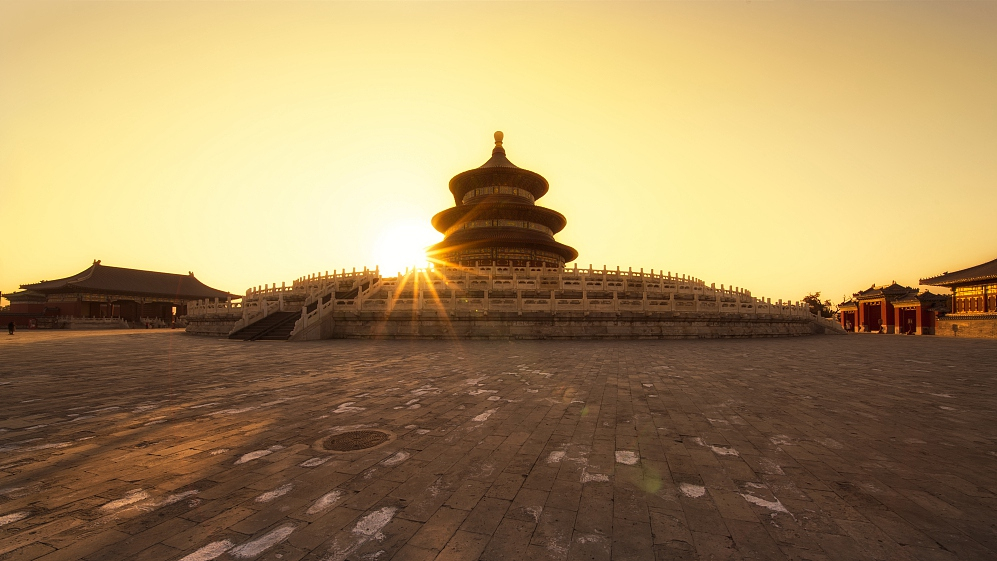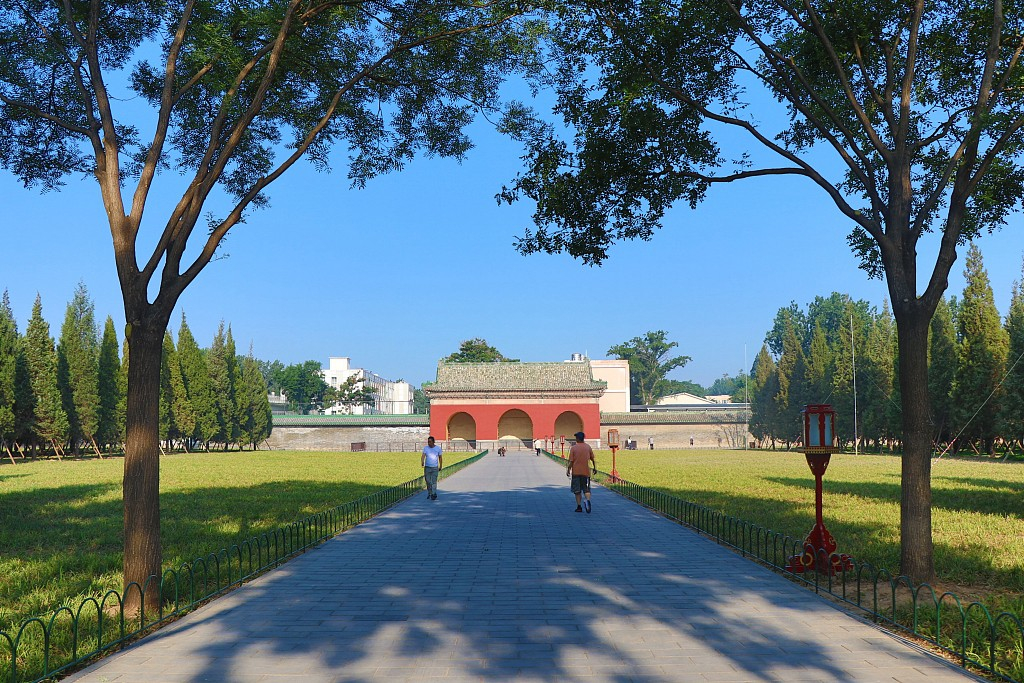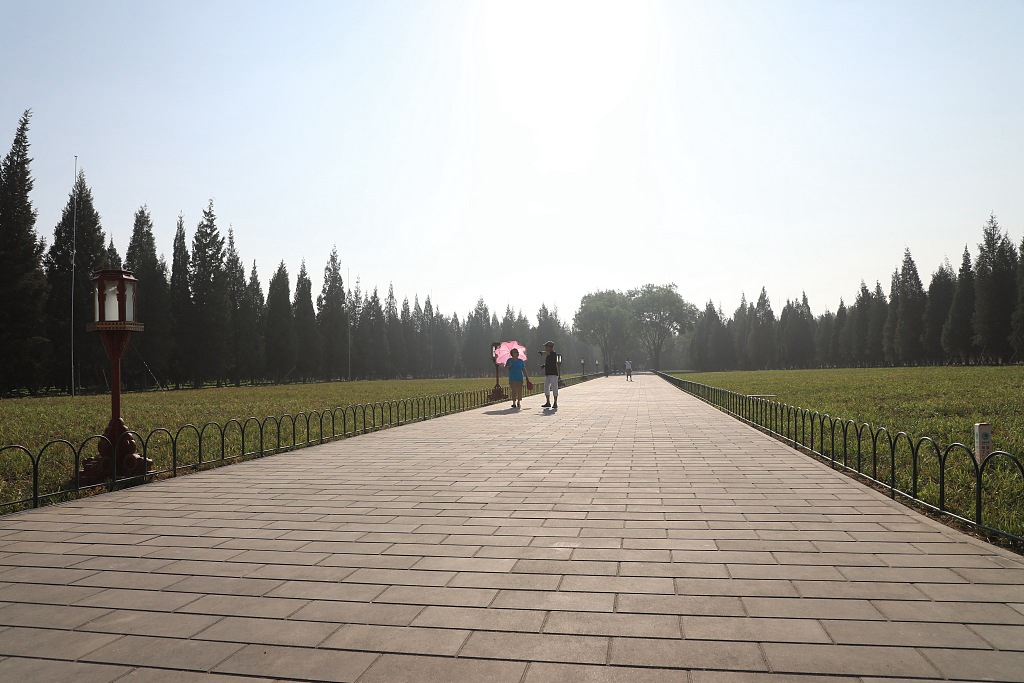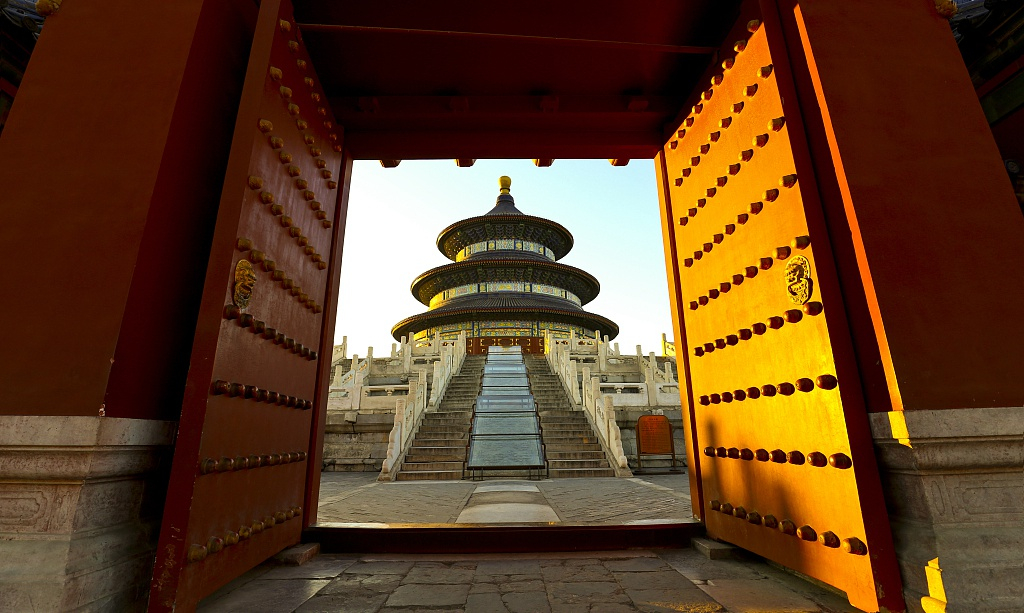
Culture
15:16, 08-Jun-2019
Temple of Heaven opens new area on Cultural Heritage Day
CGTN

Tiantan Park, also known as Temple of Heaven, opened a new area of 3.2 hectares to the public on Saturday, which is also China's Cultural Heritage Day.
It is the first time that the ancient imperial construction complex is presented to the world in its entirety.
The newly opened area includes part of the inner walls, Guangli Gate and Yu Road, through which the emperors of the Qing Dynasty (1636-1912) returned to the Forbidden City after their annual ceremonies of worshiping the Heaven.
After the collapse of the Qing Dynasty, much of the area was left idle or even deserted, and part of the buildings and walls were dilapidated or damaged.

The newly opened area at the Temple of Heaven. /VCG Photo
The newly opened area at the Temple of Heaven. /VCG Photo
The area was previously occupied by a machinery factory. In 2015, in order to prevent the cultural relics from further destruction, the Guangli Gate, which was used as storage at that time, were vacated and sealed off for protection.
The vacation and renovation was launched last year, and starting April last year, houses and factories within an area of 17,000 square meters were torn down and a 952-square-meter area was renovated.
Pedestrian paths were re-paved and trees and lawns covered the area again. The general afforested area amounted to 3.6 hectares.
And there is no need to worry about the renovated parts being not able to fit in the ancient cultural relics, either. According to Li Gao, head of the Tiantan Park, all renovations were carried out on the principle of "renovating the relics to make them just as ancient."

Renovated area at the Temple of Heaven. /VCG Photo
Renovated area at the Temple of Heaven. /VCG Photo
All the materials, norms and crafts were conducted just like the original ones. Even the species of trees in the Temple of Heaven has strict requirements, and evergreen Chinese junipers were chosen, and the spaces between every two of them should be precisely five meters, so as to create an environment of solemnity.
The Temple of Heaven was where the emperors of Ming (1368-1644) and Qing Dynasty worshiped the Heaven and prayed for good harvest. Together with the Temple of Earth, Temple of the Sun and Temple of the Moon, it was one of the very symbolic constructions of the emperors' regimes during the ancient days.
The renovation at the Temple of Heaven was part of Beijing's efforts in restoring the cultural relics along the central axis, and its application for UNESCO's World Cultural Heritage.

Qinian Palace, or the Hall of Prayer for Good Harvests, at the Temple of Heaven. /VCG Photo
Qinian Palace, or the Hall of Prayer for Good Harvests, at the Temple of Heaven. /VCG Photo
It is a well preserved area at the heart of the ancient Chinese capital's old city, which extends some 7.8 kilometers, running all the way from Yongding Gate in the south, Zhengyang Gate, Tian'anmen Square, the Forbidden City, the Jingshan Hill and ending with the Drum Tower and Bell Tower in the north.
The renovation of cultural relics along the axis has been ongoing since 2011, when the project was launched. Starting in 2012, the municipal government of Beijing invested around one billion yuan (1.45 million U.S. dollars) every year to protect and preserve its cultural relics.

SITEMAP
Copyright © 2018 CGTN. Beijing ICP prepared NO.16065310-3
Copyright © 2018 CGTN. Beijing ICP prepared NO.16065310-3